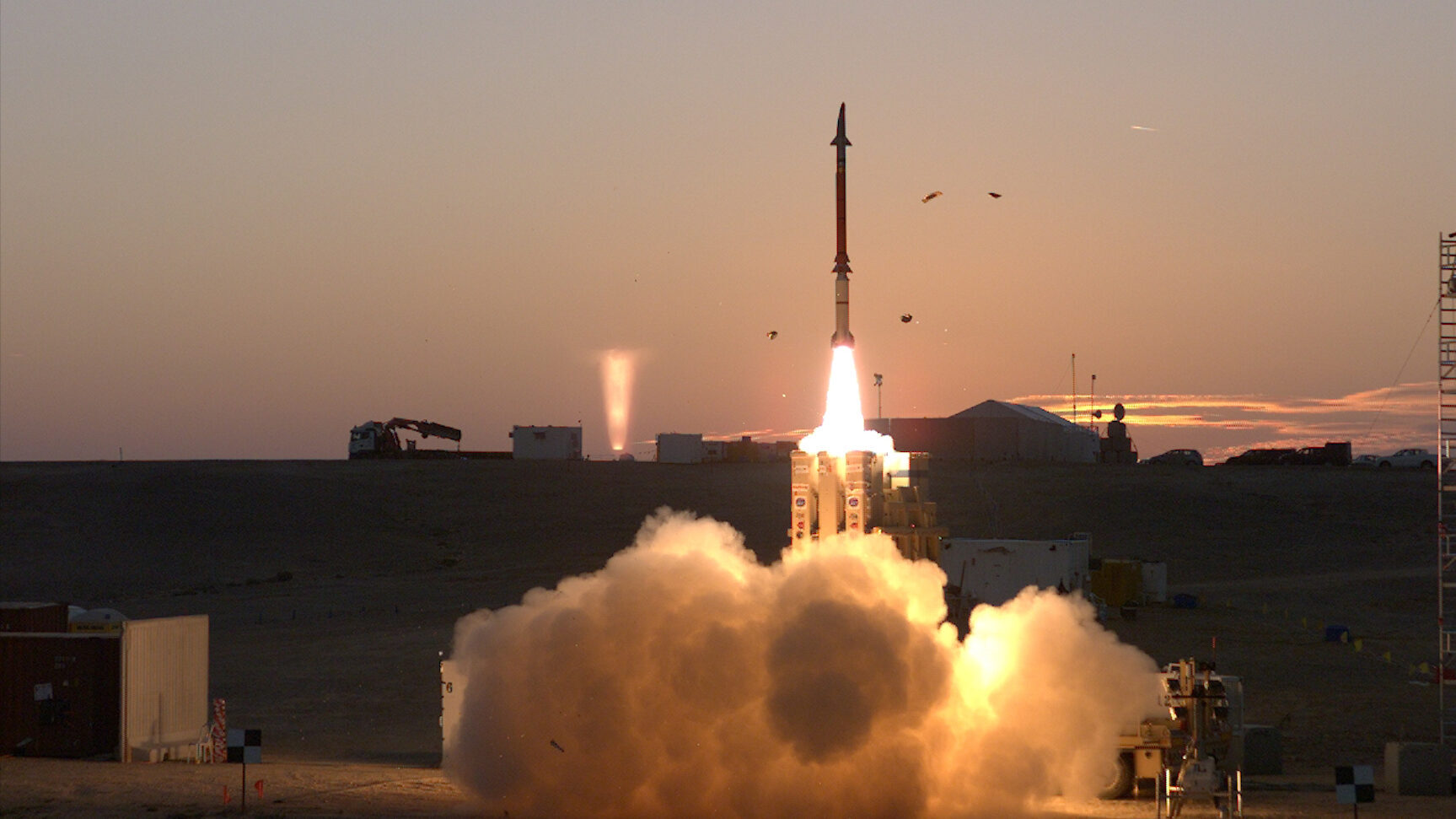
The Israel Missile Defense Organization (IMDO) of the Directorate of Defense Research and Development (DDR&D) and the U.S. Missile Defense Agency (MDA) successfully completed a series of tests of the David’s Sling Weapon System in 2015. (Missile Defense Agency)
JERUSALEM — Riding the success of real-world interceptions in Israel by the David’s Sling air defense system, a top executive at Rafael said the company is looking to make sales “deeper into Europe” and perhaps further abroad.
“It’s a long journey. I believe that it will happen. The journey began with Finland,” Executive Vice President and General Manager of Air and Missile Defense Systems Division Pini Yungman told Breaking Defense in a recent interview, referring to a deal announced in April for Helsinki to buy the system for $345 million. Yungman suggested that between David’s Sling, Iron Dome and interceptor missiles, the company could “go onto more business activities [in] Europe, and the US Army and other customers maybe in the east.”
The David’s Sling air defense system is Israel’s middle-tier interceptor that sits between the short-range Iron Dome system, also made by Rafael, and the high-altitude, anti-ballistic Arrow system. Yungman said David’s Sling “is designed to intercept all kinds of threats and has been operational since April 2017. It was designed and built to intercept long-range threats, including low-altitude maneuvering missiles, and missiles that fly at high speeds.”
Together, the three systems make up the country’s multi-layered air defense system, designed to knock out anything from mortars to long-range missiles. Both David’s Sling and Arrow were developed with US support. Iron Dome has received funding support from the US, both for the system and its interceptors, and it was developed by Israel.
Iron Dome is the main system that Israel has used to intercept rockets over the last decades, however in a recent conflict with Gaza-based militants, Israel reportedly used David’s Sling for the first time to intercept two rockets.
“The results were very good. Two operational interceptions by David’s Sling. Many interceptions by Iron Dome. More than 95 percent success by Iron Dome. One hundred percent success by David’s Sling,” Yungman said. “Now they know [David’s Sling is] not only a system that can do fantastic, outstanding results in test ranges, but in real life.”
The successful interceptions were likely welcome news in Finland, which agreed to acquire David’s Sling shortly after the nation joined NATO.
“I can tell you that it was a long and very hard competition, it’s a process. No government buys in six months or a year, it takes time,” he said. “We got support from US government because it is a system we developed with the US Missile Defense Agency and Israel Missile Defense Organization. We need[ed] approval from the Americans.”
Despite regulatory hurdles, Yungman suggested other nations have taken notice of Israeli systems, especially as Russian attacks on Ukrainian cities highlighted the need for robust air defenses.
“I’m 100 percent sure countries in Europe understand what is going on and understand the threats that exist and will be developed and produced for the future,” he said. “Intelligence today is open and tracking what is happening in Ukraine. We understand Russians operate drones from Iran and other systems and threats.”
Interceptor Optimism
In addition to David’s Sling developments, Yungman said the company sees a potential expansion for the system’s interceptor, known as Stunner (in the Israel) or SkyCeptor (in the US), which could find a new home integrated into Raytheon-made Patriot batteries used by the US Army and others — an idea floated over the last several years. Rafael and Raytheon developed Stunner together since 2006 when the MDA and IMDO began to develop David’s Sling. Integrating the SkyCeptor with Patriots could significantly widen the interceptor’s market.
Several European nations field the Patriot, and Yungman said Rafael is “willing to do integration [with the] Patriot for European countries,” and suggesting one or two customers would be interested in the SkyCeptor.
Navy jet trainer fleet operations remain paused after engine mishap
One week after the incident, a Navy spokesperson says the service is continuing to assess the fleet’s ability to safely resume flight.


























